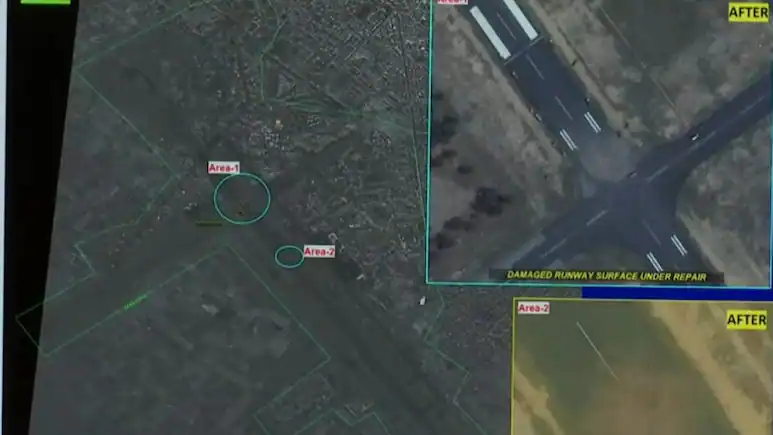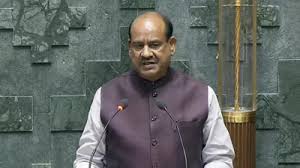Date 10 May, Indian army wreaked havoc with Brahmos near Islamabad and Pakistan started showing mercy

a
10 May 2025, this date will never be forgotten by Pakistan. Whenever Operation Sindoor will be mentioned, this day will be remembered. This is the same day when a panicked Pakistani army officer called India and pleaded that enough is enough… we are ready for ceasefire. Actually, this was the day when the Indian army’s patience was about to break. The Indian army targeted and destroyed many Pakistani military bases one after the other in retaliation. Indian missiles had reached close to Islamabad. Seeing this mayhem of the Indian army, the whole of Pakistan trembled. In such a situation, the panicked Pakistan kneeled down and agreed to ceasefire. 11 airbases on Pakistani soil were destroyed in just 90 minutes. This roar of India was heard not only by Pakistan but the whole world. During Operation Sindoor, India carried out targeted attacks on major Pakistani airbases for 90 minutes. These attacks brought Pakistan to its knees. Let us tell you which military bases of Pakistan were destroyed by India…
Noor Khan/Chaklala Airbase (Rawalpindi) – India’s attack on Noor Khan disrupted Pakistan’s centre of air logistics and high-level military coordination. It was the closest base to Islamabad, often used for VIP movement and military logistics, its neutralization led to the breakdown of vital links between the Pakistan Air Force (PAF) and its operational units during the conflict.

PAF Base Rafiqui (Shorkot)- Rafiqui, a major fighter base that hosted frontline fighter squadrons, was also neutralised by our forces. The effect of this was that the destruction of its aircraft shelters and runway infrastructure significantly weakened Pakistan’s ability to launch retaliatory airstrikes, especially blunting its attacks in central Punjab. The move effectively wiped out one of the PAF’s sharpest offensive tools.
Mureed Airbase (Punjab)- By targeting Murid, India damaged a vital training and potentially missile storage centre. The attack reduced the readiness of Pakistan’s air force. The loss will be felt for years to come. India cut off the pilot training pipeline.
Sukkur Airbase (Sindh)- Destroying Sukkur Airbase cut off Pakistan’s southern air corridor. Sukkur was essential for the movement of troops and equipment into Sindh and Balochistan. Its loss cut major logistics arteries and reduced Pakistan’s operational range in the south.

Sialkot Airbase (East Punjab)- Sialkot, located close to the Indian border, was neutralised early in the conflict. The base served as a forward operating platform for flights into Jammu and Punjab. Its destruction created a critical blind spot on the eastern border, preventing Pakistani ground forces from challenging Indian air dominance.
Pasrur Airstrip (Punjab)- Although small, the Pasrur facility played a vital role in emergency air operations. By destroying it, India weakened Pakistan’s strategic position and forced aircraft to concentrate at more vulnerable locations.

Chunian (radar/support installation) – The attacks on Chunian disrupted critical radar coverage and communications infrastructure for monitoring the airspace over central Punjab. This created a gap in Pakistan’s early warning systems, allowing Indian aircraft to enter with minimal risk.

Sargodha Airbase (Mushaf Base) – The destruction of Sargodha was a strategic masterstroke. As the most important base in Pakistan – home to the Combat Commanders School, nuclear delivery platforms and elite squadrons – its destruction crippled Pakistan’s command-and-control structure. The blow was both operational and symbolic, shattering the myth of an invincible ‘PAF’.

Skardu Airbase (Gilgit-Baltistan)- The neutralisation of Skardu reduced Pakistan’s northern surveillance and air operations near the Line of Actual Control. It also disrupted logistical links that could have enhanced Chinese-Pakistani coordination. The strategic advantage in the northern region now rests squarely with India.
Bholari Airbase (near Karachi)- As one of Pakistan’s newest airbases with dual-use naval and air roles, Bholari was a symbol of southern force projection ambitions. Its destruction dealt a blow to those aspirations, which were centred on coastal defence coordination efforts and thus left Karachi vulnerable to future attacks.

Jacobabad Airbase (Sindh-Baluchistan)- The destruction of Jacobabad led to the isolation of West Pakistan. It was used for military deployment. It was also used by the US military during the war on terrorism. By destroying it, we disrupted internal mobility, supply chain and western air surveillance of Pakistan.

Frightened, Pakistan contacted America
After these attacks, Pakistan contacted its American ‘well-wishers’ for help. Secretary of State Marco Rubio, after speaking to Pakistan Army Chief Asim Munir on May 10, spoke to External Affairs Minister S Jaishankar and told him that Pakistan was ready to stop the attacks. A source said, ‘He was told that there will be no political talks and he should contact the Indian DGMO.’ While India strongly denied contacting any country to stop the violence. The DGMO spoke at 3.35 pm. According to Indian officials, the halt in firing was the result of this conversation and not any external interference. According to the Indian Express report, in the early hours of Saturday, India used modern weapons like BrahMos supersonic cruise missile, SCALP and HAMMER on several major air force bases of Pakistan.
…and then Pakistan pleaded
India’s DGMO Lieutenant General Rajiv Ghai said on Sunday that his Pakistani counterpart had called him and requested him to find a way to stop the conflict. On Saturday afternoon, both DGMOs agreed to stop all types of firing and military action on land, air and sea from 5 pm Indian time. The Indian Army said that this call from Pakistan’s DGMO came after the Indian Armed Forces launched a fierce counter-attack on several Pakistani military installations including Rafiki, Murid, Chaklala, Rahim Yar Khan, Sukkur and Chunian on Saturday morning. These attacks were carried out after the Pakistani Army attempted to target major Indian military installations on the night of May 9 and 10. He said that after careful deliberations, nine terrorist hideouts were identified and attacked with precision weapons.







